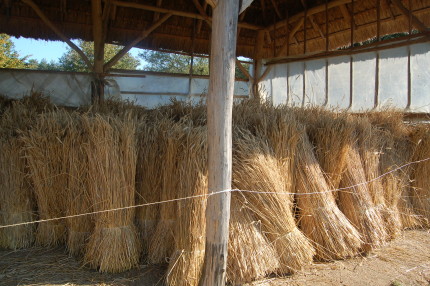THATCH - THE GOLD OF HEGYHÁT

Thatch-making is an ancient knowledge, whose history dates back to centuries in folk architecture. Before the emergence of today's modern building materials, the key issue in construction was the covering of the houses and their shell skin. In the past, the most suitable materials for this purpose were fibrous plant derivatives: reed, straw, shingle. Since the shingle only spreads in wood-rich areas, and only the nobility had the right to cut the reed, the common folks solved the issue of covering their houses with straw.
There are several variants of straw roofs. In the Hegyhát in County Vas the thatch made of double-sheaves had developed. Inhabitants of the region use the rye straw as it is the longest and strongest crop. The cereal crop grown for agricultural use creates a large amount of empty straws that can be turned into a perfect roofing material with some knowledge and abilities. The construction material is made of material without mechanical force and any kind of artificial additive, by purely human knowledge and capabilities. Although the end of the 19th century, most of the villages in the area consisted of buildings with thatched roofs, today there are only a few wine cellars with thatched roof on the vineyards and a few country cottages scattered throughout the region. Fortunately, ancient knowledge is still alive today. There are many cultivators of this profession who have inherited the tradition from their original sources, they still work today and continue to pass this knowledge on as much as possible. One of these guardians is the Hegypásztor Kör Association, which was created only to rescue an old cellar with thatched roof, but today it can be said that the ancient knowledge of thatch roofing has been saved from oblivion.
